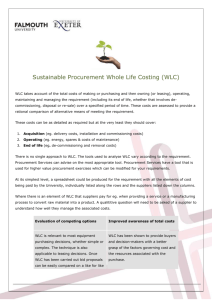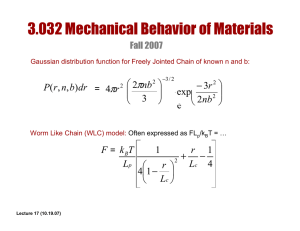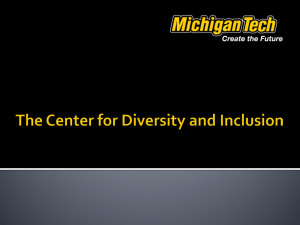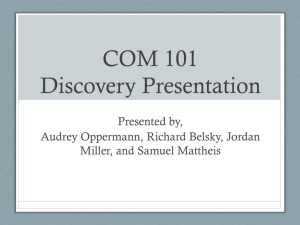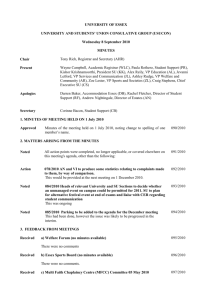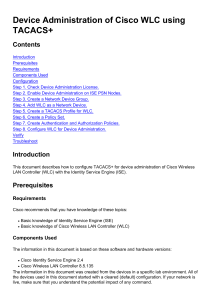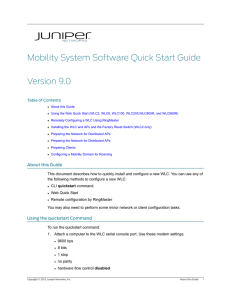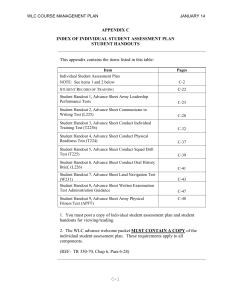Whole Life Costing (WLC)
advertisement
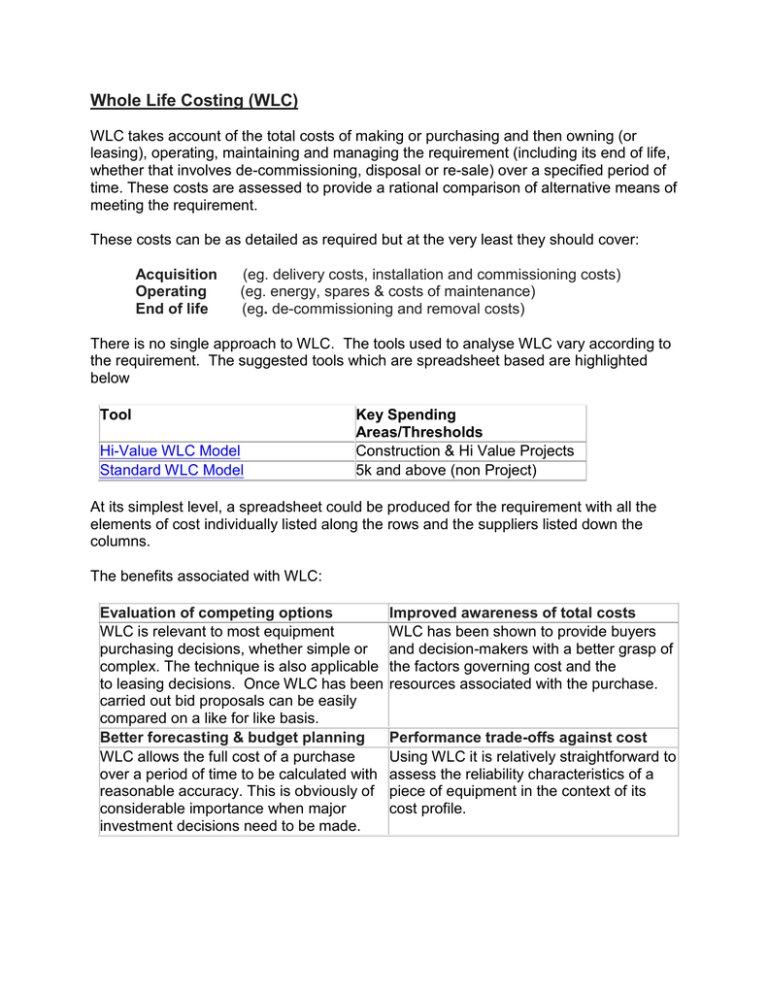
Whole Life Costing (WLC) WLC takes account of the total costs of making or purchasing and then owning (or leasing), operating, maintaining and managing the requirement (including its end of life, whether that involves de-commissioning, disposal or re-sale) over a specified period of time. These costs are assessed to provide a rational comparison of alternative means of meeting the requirement. These costs can be as detailed as required but at the very least they should cover: Acquisition Operating End of life (eg. delivery costs, installation and commissioning costs) (eg. energy, spares & costs of maintenance) (eg. de-commissioning and removal costs) There is no single approach to WLC. The tools used to analyse WLC vary according to the requirement. The suggested tools which are spreadsheet based are highlighted below Tool Hi-Value WLC Model Standard WLC Model Key Spending Areas/Thresholds Construction & Hi Value Projects 5k and above (non Project) At its simplest level, a spreadsheet could be produced for the requirement with all the elements of cost individually listed along the rows and the suppliers listed down the columns. The benefits associated with WLC: Evaluation of competing options WLC is relevant to most equipment purchasing decisions, whether simple or complex. The technique is also applicable to leasing decisions. Once WLC has been carried out bid proposals can be easily compared on a like for like basis. Better forecasting & budget planning WLC allows the full cost of a purchase over a period of time to be calculated with reasonable accuracy. This is obviously of considerable importance when major investment decisions need to be made. Improved awareness of total costs WLC has been shown to provide buyers and decision-makers with a better grasp of the factors governing cost and the resources associated with the purchase. Performance trade-offs against cost Using WLC it is relatively straightforward to assess the reliability characteristics of a piece of equipment in the context of its cost profile. A more comprehensive breakdown of whole life costs: Pre-acquisition costs • specification and design • budget allocation • preparation and issuing of invitation to tenders • cost of tender evaluation • cost of letting contract • preparation for receipt of the requirement • professional external advice (eg. legal) Acquisition costs • purchase price • delivery charge • insurance and taxes (inc. import duties, etc) • installation and commissioning • training and support • internal costs associated with changing from the incumbent supplier (which should be identified prior to tenders being received) • integration of systems • storage requirements Operating costs Maintenance costs • labour • specialist labour • materials • specialist tooling • consumables • spare and replacement parts • energy supply and consumption • reduced output with age • contract and supplier management • frequency of maintenance and • transaction costs recommended • environmental costs downtimes • cost of change, for instance, a decision to • servicing and inspection regimes use alternative materials Downtime costs End of life costs • lost profits • safe disposal • extra costs of overtime or sub-contracting • re-sale • costs associated with breakdown of • ongoing liabilities equipment • decommissioning • claims resulting from non-performance • removal for sale or scrap • re-instatement of land or buildings for alternative use
